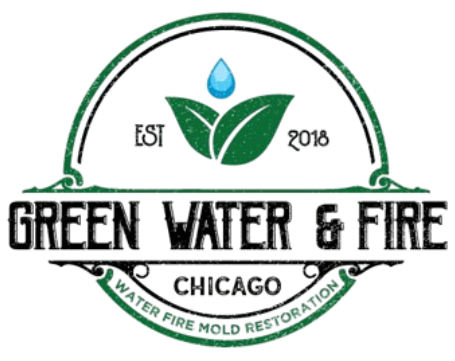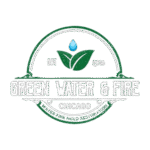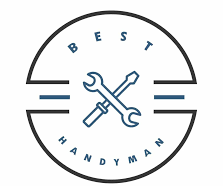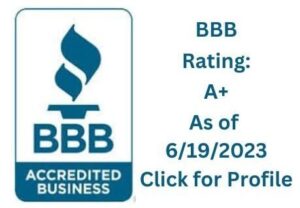In today’s world, technology is constantly advancing and reshaping industries. One area where it’s making a major difference is in the restoration process for properties affected by water and fire damage. From Matterport scans to advanced sanitation techniques, the application of 3D technology has revolutionized how restoration services are provided.
Green water and fire are at the forefront of this innovation, utilizing cutting-edge 3D technology to enhance the restoration process. These tools help speed up recovery, improve accuracy, and make the entire process more efficient for property owners and restoration experts alike. The integration of such technology ensures that every step, from assessment to restoration, is done with greater precision and speed, leading to better outcomes for all involved.
What is 3D Technology in Restoration?
Before diving into its benefits, let’s first understand what we mean by 3D technology in the context of restoration. 3D technology allows for the creation of digital models of physical spaces or objects using specialized equipment, such as Matterport scans, that capture detailed measurements, dimensions, and images.
In restoration, 3D models are used to assess the damage, plan the repair work, and even share real-time progress with clients. This means that instead of relying on sketches or photographs alone, restoration professionals can use highly accurate 3D representations to guide their work.
How Matterport Scans Enhance the Restoration Process
One of the most exciting advancements in restoration is the use of Matterport scans. These scans capture 360-degree images of property in stunning detail, giving restoration teams a complete view of the damage. Let’s break down how this tool is improving the restoration process:
1. Accurate Assessment of Damage
Matterport scans allow restoration professionals to gain an in-depth understanding of the property’s condition. Unlike traditional methods, such as taking photos or measuring by hand, Matterport scans capture everything with exceptional precision. The 3D model of the property includes measurements of walls, floors, ceilings, and structural features. This ensures the damage is properly documented and assessed, which is critical for creating an effective restoration plan.
2. Faster Estimates and Planning
Traditional restoration methods often involve time-consuming inspections and estimations. With Matterport scans, restoration experts can quickly analyze the property and provide more accurate estimates. The scans allow them to plan their restoration process efficiently, saving both time and resources. This leads to faster recovery times, which is essential when dealing with emergencies like fire or water damage.
3. Remote Access and Collaboration
Matterport scans also allow restoration teams to access the property remotely. This means that experts from different locations can collaborate without being physically present. It’s especially helpful when dealing with large-scale damage or when multiple specialists are required for different aspects of the restoration, such as fire damage restoration or water damage restoration. With the 3D scan, everyone involved has a clear understanding of the situation, regardless of where they are.
The Role of 3D Technology in Fire Damage Restoration
Fire damage restoration is a complex process that requires careful attention to detail. The destruction caused by fire can be extensive, affecting everything from the structure to the air quality. Here’s how 3D technology helps in fire damage restoration:
1. Visualizing Structural Integrity
After a fire, it’s crucial to assess the structural integrity of a building. Fire can weaken walls, floors, and support beams, which may not be visible to the naked eye. 3D scans help restoration experts see inside these structures, identifying areas that may need additional support or repair. With 3D technology, professionals can make informed decisions to ensure that the building is safe to work in and inhabit once restored.
2. Documentation for Insurance Claims
Insurance claims often require detailed documentation of the damage before repairs can begin. 3D technology provides an accurate, comprehensive visual record that is much more effective than photographs. These scans can be shared with insurance companies, which helps speed up the claims process and ensures that no details are overlooked.
3. Improved Clean-Up and Restoration Efficiency
When restoring a property after a fire, it’s essential to remove all traces of smoke, soot, and other contaminants. 3D technology helps restoration professionals plan and execute the cleaning and Sanitation process more effectively. By providing a detailed map of the property, the team can target areas that need the most attention and ensure that no spots are missed. This leads to a quicker and more thorough restoration.
How 3D Technology Improves Water Damage Restoration
Water damage restoration can be just as challenging as fire damage restoration. Whether it’s from flooding, leaks, or burst pipes, water can wreak havoc on a property. Here’s how 3D technology is streamlining the water damage restoration process:
1. Detecting Hidden Water Damage
One of the biggest challenges of water damage restoration is identifying areas that may be hidden from view, such as behind walls or under flooring. Traditional methods of assessing water damage may miss these areas, leading to incomplete restoration. 3D technology, however, captures every corner of a space, allowing restoration professionals to detect hidden water damage and target those areas with precision.
2. Moisture Mapping for Targeted Treatment
Once the water damage is identified, 3D technology allows for moisture mapping. This involves using advanced sensors to detect moisture levels in different parts of the property. By combining the 3D scan with moisture data, restoration teams can pinpoint the most affected areas and apply appropriate treatments to prevent further damage, like mold growth or structural weakening.
3. Preventing Future Water Damage
Preventing future water damage is a key part of the restoration process. By creating a 3D model of the property, experts can identify potential vulnerabilities in the building’s structure that might lead to leaks or flooding in the future. With this information, they can suggest improvements or repairs to safeguard the property against similar damage down the line.
1. Identifying Contaminated Areas
3D scans help pinpoint areas that are most affected by contaminants, such as mold or bacteria. With moisture mapping, they can also identify where water may have caused mold growth behind walls or under floors. This ensures that no harmful contaminants are left behind, creating a healthier living environment after the restoration process is complete.
2. Efficient Use of Resources
In sanitation services, time and resources matter. With 3D models, restoration teams can plan their approach, ensuring that they are only focusing on areas that need immediate attention. This reduces waste and increases the efficiency of the cleaning process, saving both time and money.
Conclusion:
The integration of 3D technology into the restoration process has significantly transformed the way we assess, plan, and execute restoration projects. At Green Water And Fire, we leverage Matterport scans for a detailed view of the damage and enhanced sanitation practices, ensuring that the restoration process is faster, more accurate, and more efficient. Whether it’s fire damage restoration, water damage restoration, or sanitation services, staying ahead of the curve with the latest tools is crucial. The benefits of 3D technology are evident, providing detailed documentation, precise assessments, and efficient planning, ultimately resulting in a smoother, quicker recovery for both professionals and clients.













